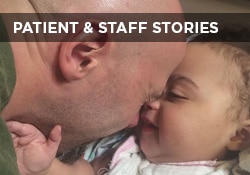This website uses cookies so that we can provide you with the best user experience possible. Cookie information is stored in your browser and performs functions such as recognising you when you return to our website and helping our team to understand which sections of the website you find most interesting and useful.

Susan E. Mazer, Ph.D. Blog
Thoughts and ideas on healthcare
Hi, and welcome to my blog! I'm Susan E. Mazer -- a knowledge expert and thought leader on how the environment of care impacts the patient experience. Topics I write about include safety, satisfaction, hospital noise, nursing, care at the bedside, and much more.
Do No Harm Includes Pain Management
June 23, 2017
 Recently, I had a discussion with a retired physician from the Veteran’s Administration.
Recently, I had a discussion with a retired physician from the Veteran’s Administration.
She expressed her frustration over the urgent need for pain medication and the lack of time to do the requisite research and education for the patient, which has contributed to the current opioid epidemic.
I told her that I had a wisdom tooth extracted not long ago. Prior to the procedure, the oral surgeon asked what kind of pain medication I wanted: Percocet, oxycodone, hydrocodone, etc.
I said “NO!” until he got to Tylenol with codeine. He gave me a prescription plus one refill.
What is amazing is that this oral surgeon did not ask about my history or if I had any issues with pain medication. Nor did he ask if I had any addictions that might be threatened by such a drug.
I was so aware of the freedom of choice. I could have had anything I wanted. Thus the trap for many patients.
Patients’ Expectation of Pain
While writing a paper on pain management earlier this year, I did extensive research on practice and outcomes. What I found was that patients have come to expect to have “no pain,” even though the healthiest approach is to expect some degree of manageable pain and use other strategies to deal with the rest.
The “other strategies” for pain management may include watching television or a movie, playing chess, having an engrossing discussion, listening to music, etc. In other words, participating in a distraction that is so engaging that the mind focuses not on the pain, but on much better things.
The same Joint Commission that in 1990 declared pain the fifth vital sign has now shifted its position entirely. Now, it calls upon physicians to carefully treat pain with both pharmacological and non-pharmacological strategies and be aware of the progress of each patient.
It suggests physical modalities like acupuncture or massage therapy; relaxation therapy like guided-imagery or music therapy; and cognitive behavioral therapy. Not so long ago, these treatments were considered to be without clinical basis or value.
Patients’ options have dramatically expanded.
Partnering With Patients
Whole Person Care calls upon clinicians to address the emotional, spiritual, physical, and social context in which a patient lives. It also calls upon them to partner with patients, empowering them to figure out what will work for them.
This means that my oral surgeon was right to give me a choice of pain meds. Maybe because I did not look like I was an addict, he made assumptions that I could handle anything.
I am also older, dressed well, paid cash, and handed him my business card when he walked into the room. His assumptions that I am “normal” are understandable, although addiction and dependency know neither age nor gender.
The question all clinicians should be asking themselves, though, is how to engage patients in their own pain management and still “do no harm.”
Download a free copy of my paper on pain management.
P.S. If you like this post, please do me a favor and share on LinkedIn, Twitter, Facebook, etc. Also to get automatic notices when a new post is published, please subscribe. No spam – just great content. Thanks!










